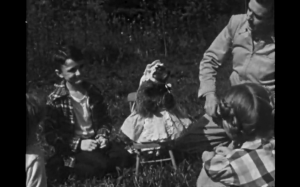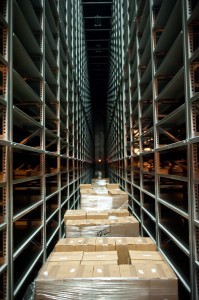In anticipation of the second annual Day of Digital Archives (DoDA) coming up on Friday October 12, 2012, we present a glimpse into the world of the digital film archive at Indiana University.
Day of Digital Archives
DoDA was first established by Gretchen Gueguen as a way to connect archivists, digital humanists, programmers, and anybody else using or managing a digital archive. It is an online platform to raise awareness and spread knowledge about digital archives. To be more specific, who are the users of digital archives? Who manages them? What other projects are happening in the vast domain of digital collections? What can we learn about our own work by catching a glimpse of what other professionals in the field are doing? This being the second year of DoDA, the coming years will hopefully provide many connections and insights to other projects happening around the world. Past contributors have shared posts about data management, digital forensics, university archives, natural disasters and the video collections at the Hormel Gay and Lesbian Center of San Francisco Public Library, just to mention a few.
Digitized Films and Loans

Many of the contributors for DoDA 2011 deal primarily with born-digital objects, but for many institutions, and we at the Indiana University Libraries Film Archive are no exception, that is not requisite. Our online archive of digitized films were filmed between 1949-1978. These films were digitized over the course of the last 10 years by Scene Savers in Covington, KY. The Bradley Collection was the first collection to be digitized, however some of the items that are digitized cannot be streamed online due to copyright issues. The educational films that are online were all digitized in the past four years. Due to the fact that IU made these films and owns the copyright for them, we are able to stream them to the public. Issues of copyright are ever apparent with digital libraries given many materials people want access to are not yet in the public domain. Currently in the U.S., any work published before January 1, 1923 is considered to be in the public domain.
We receive many requests on an almost daily basis for digitized copies of particular films in our collection. Oftentimes requests come from libraries, universities and researchers. After licensing and copyright issues have been cleared, we are able to send away for a digital copy, which is then loaned to the patron. In the future we will hopefully be able to digitize a large portion of our collection in-house and provide our own digital copies for specific requests.
Currently, for titles already in our collection, item information may be retrieved from IUCAT. Because the majority of our holdings have yet to be digitized, metadata must be added to the catalog in order to locate an item. For collections that we have recently acquired, for example,the Oregon Collection, we are still processing, bar coding and adding metadata to each canister simultaneously as it is inserted into IUCAT. This is a time consuming but essential step in the process of digitizing these films down the road. Additionally, the Oregon Collection is still on the burner and we are continuing to plow through the remaining palettes at a steady clip.

In managing this archival collection, our goal is to preserve what we have through a process of collecting, organizing and ultimately making public our holdings. By allowing for easier access we ensure that these items are usable, not simply left to collect cyber dust in an electronic box with no key.
Digital Archive Considerations
When considering a digital library, it is important to note the difference between a website and a digital library or archive. According to How To Build a Digital Library by Ian Witten, a digital library is defined as “a focused collection of digital objects, including text, video, and audio, along with methods for access and retrieval, and for selection, organization, and maintenance of the collection.” Digital archivists must consider how they will collect, preserve and dispense or allow access to their materials. In contrast to a website, which might have little or no organizational structure, a digital library or archive must meet the needs of its users and allow them to find materials of their choosing. By including extensive metadata, users are able to browse and search tags or other components to find a specific item. Compared to the typical library where a user might simply browse the shelves until the right book jumps out at them, how do users find materials in digital collections? Are they able to browse and search? What tools must be put into place to allow for browsing and then, once an item is selected what is the protocol for accessing and viewing an item?
There are many small things that must be taken into consideration when working with a digital collection and this is just a small slice of the pie. We will continue to provide quality materials and easily accessible finding aids as our online collection grows over the coming years. Have a great DoDA wherever you are!
~Asia Harman